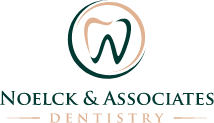Dental bridges are prosthetic devices designed to replace missing teeth by spanning the gap between healthy teeth or dental implants. They consist of two or more crowns placed on the adjacent natural teeth or implants, known as abutments, and one or more artificial teeth, called pontics, that fill the space. The procedure involves reshaping the abutment teeth to fit the cemented crowns and the pontics. This restoration is crucial for maintaining oral function and aesthetics, as it restores the ability to chew properly, prevents the remaining teeth from shifting into the gap, and helps preserve the alignment of the bite. Additionally, dental bridges improve speech and self-esteem by filling gaps and providing a natural-looking smile.
The Different Types of Dental Bridges
Traditional Bridges
Traditional bridges are the most commonly used type. They consist of a false tooth or teeth (pontics) anchored by crowns on the adjacent natural teeth, known as abutments. The abutment teeth are reshaped to fit the crowns, which hold the pontics in place. This type is highly effective for replacing a missing tooth or multiple adjacent teeth, provided the surrounding teeth are healthy and strong enough to support the bridge.
Cantilever Bridges
Cantilever bridges are used when only one adjacent tooth is available on one side of the gap. The bridge is anchored to this single tooth, with the pontic extending over the space. Cantilever bridges are less common but can be suitable for specific cases where only one abutment tooth is present. However, they may not be ideal for large gaps or areas with significant bite pressure due to the added stress on the single anchor tooth.
Maryland Bridges
Maryland bridges, also known as resin-bonded bridges, are used primarily for replacing front teeth. They consist of a false tooth supported by a metal or porcelain framework bonded to the back of the adjacent teeth. This type of bridge requires less alteration to the adjacent teeth than traditional bridges, as it doesn't involve extensive reshaping. Maryland bridges are less invasive and provide a good aesthetic solution for front teeth.
Implant-Supported Bridges
Implant-supported bridges are used when a more permanent and stable solution is needed, especially when adjacent teeth are not suitable for supporting a bridge. Instead of relying on natural teeth, the bridge is anchored by dental implants placed in the jawbone. Implants provide a strong foundation for the bridge, ensuring stability and longevity. This type is ideal for replacing multiple missing teeth or when traditional bridges are not feasible.
The Connection Between Dental Bridges and Gum Health
Prevention of Gum Disease
Dental bridges help prevent gum disease by filling the gap left by missing teeth. Gaps in the dental arch can trap food particles and bacteria, leading to plaque buildup and potential gum infections. A properly fitted bridge closes these gaps, reducing the risk of bacterial accumulation and improving oral hygiene. Contact us to learn more.
Support for Gum Tissue
Dental bridges support the gum tissue around the gap. When a tooth is missing, the surrounding gum tissue can recede or become inflamed due to a lack of stimulation and exposed areas. A bridge helps maintain the gum's natural contour and provides the necessary stimulation to keep the tissue healthy and intact.
Prevention of Shifting Teeth
Missing teeth can lead to adjacent teeth shifting into the empty space, which can disrupt the alignment of the bite and cause gum problems. This shifting can also create areas that are difficult to clean, increasing the risk of gum disease. Dental bridges help maintain proper tooth alignment, preventing adjacent teeth from moving and reducing the likelihood of gum issues.
Protection of Remaining Teeth
Dental bridges protect the remaining teeth from the stress and strain of chewing or biting with a gap in the mouth. By distributing the forces of chewing evenly across the dental arch, bridges reduce the likelihood of damage to the surrounding teeth and gums.
How to Care for Your Dental Bridge
- Brush your teeth, including the bridge, at least twice daily with fluoride toothpaste to remove plaque and food particles.
- Use dental floss or a floss threader to clean between the bridge and the surrounding teeth. Special floss designed for bridges can help reach difficult areas.
- Rinse with an antimicrobial mouthwash to reduce plaque buildup and prevent gum disease.
- Visit your dentist regularly for check-ups and professional cleanings to ensure the bridge is in good condition and to address any issues early.
- Refrain from chewing on hard foods or objects that can damage the bridge or cause it to come loose.
- Limit consuming foods and beverages that can stain the bridge, such as coffee, tea, and red wine.
- Periodically check the bridge for any signs of loosening or discomfort, and contact our dentist if you notice any issues.
- If you play contact sports, consider using a mouthguard to protect your bridge and natural teeth from potential injury.
Dental bridges offer a practical and aesthetic solution to restore your smile and confidence. Visit Noelck and Associates at 551 E Plaza Cir, Litchfield Park, AZ 85340, or call (623) 935-1155 to schedule a consultation and discover how dental bridges can improve your oral health.
Location
551 E Plaza Cir,
Litchfield Park, AZ 85340
Office Hours
MON - THU7:00 am - 4:00 pm
FRI - FRI7:00 am - 2:00 pm
SAT - SUNClosed


















